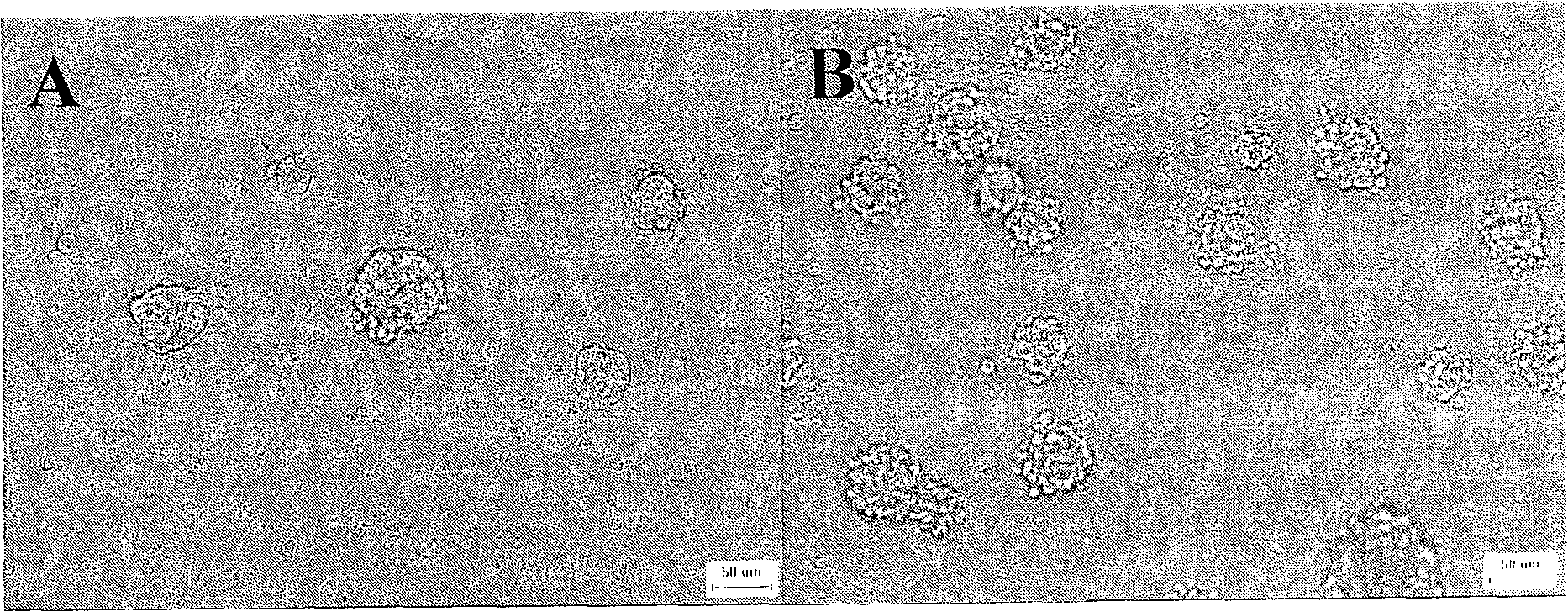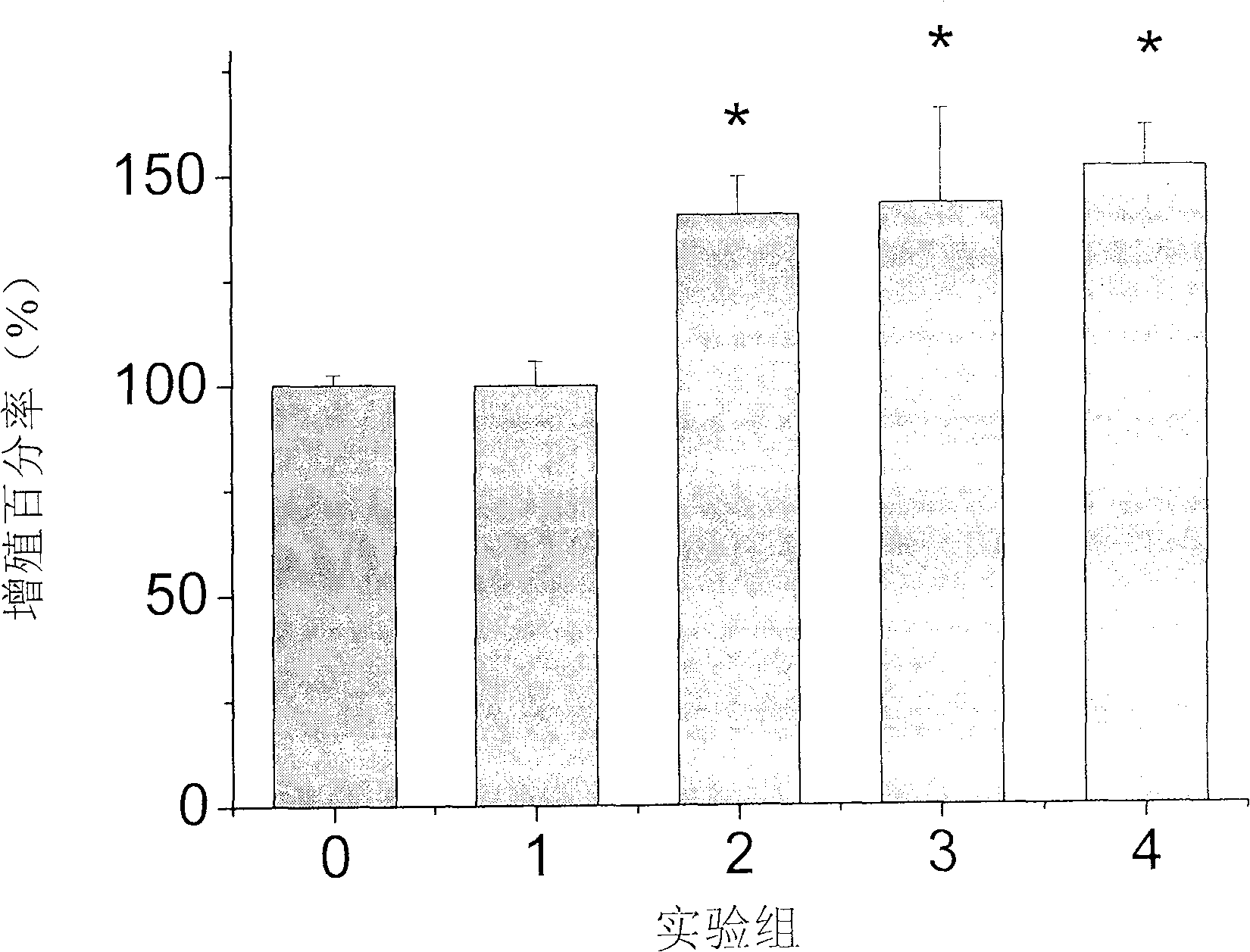Use of protocatechuic acid in accelerating nerve stem cell multiplication in vitro and inducement differentiation
A technology of neural stem cells and protocatechuic acid, applied in medical preparations containing active ingredients, nervous system diseases, biochemical equipment and methods, etc.
- Summary
- Abstract
- Description
- Claims
- Application Information
AI Technical Summary
Problems solved by technology
Method used
Image
Examples
Embodiment 1
[0024]Example 1 Isolation, cultivation and identification of neural stem cells in vitro
[0025] (1) Isolation and culture of neural stem cells derived from midbrain
[0026] E14d mice were killed by necking, the embryos were taken out by aseptic operation, the midbrain tissue of the embryos was separated, digested into single cells, counted with trypan blue, and counted by 2×10 5 cells / mL inoculated in a T25 culture flask at 37°C, 5% CO 2 For suspension culture, the stem cell culture medium is DMEM / F12 (1:1), 2% B27, bFGF (10 ng / mL), EGF (20 ng / mL). Change the medium in half every 3 to 4 days, and observe the number and size of the growing suspended cell spheres after one week of culture. After collecting the neurospheres and mechanically blowing them into a single-cell suspension, they were placed under the same conditions to continue culturing, and whether to pass passage was determined depending on the growth status.
[0027] (2) Continuous passage and induced different...
Embodiment 2
[0032] Example 2 Proliferation-promoting effect of protocatechuic acid on neural stem cells
[0033] (1) Experimental design and drug treatment
[0034] The experiment was divided into five groups, namely the control group, 6×10 -6 mol / L protocatechuic acid group, 6×10 -5 mol / L protocatechuic acid group, 6×10 -4 mol / L protocatechuic acid group and 1.2×10 -3 mol / L protocatechuic acid group. Collect the second-generation neural stem cells from the primary culture, and use 2×10 5 Cells / mL were inoculated in 24-well plates, 500 μL per well, and 6 replicate wells were set up for each treatment group. The number of neurospheres and the survival rate of cells were observed after 4 days and 7 days of culture respectively.
[0035] (2) Detection method of neural stem cell proliferation
[0036] ① Neurosphere counting method: after the primary cultured second-generation neural stem cells were cultured under the action of different concentrations of protocatechuic acid for 4 days a...
Embodiment 3
[0040] Example 3 Ability of Protocatechuic Acid to Induce Neural Stem Cells to Differentiate into Functional Neurons
[0041] (1) Protocatechuic acid induced differentiation of neural stem cells
[0042] The second-generation neural stem cell spheres cultured at the primary stage were mixed with 6×10 -5 The neural stem cell spheres were collected after being treated with mol / L protocatechuic acid for 7 days, and blown into a single-cell suspension in the differentiation medium (DMEM / F12+10% fetal bovine serum) respectively. 5 Inoculate the poly-L-lysine-treated slides in a 24-well plate at a concentration of 1 / ml, 500 μL per well, and set six replicate wells for each treatment group. After 24 hours, it can be seen that the cells are all attached to the wall, and different concentrations of protocatechuic acid (6 × 10 -5 , 6×10 -4 , 1.2×10 -3 mol / L) after treatment, the culture plate was placed in saturated humidity, 5% CO 2 , 37 ° C incubator to continue culturing for 7 d...
PUM
| Property | Measurement | Unit |
|---|---|---|
| diameter | aaaaa | aaaaa |
Abstract
Description
Claims
Application Information
 Login to View More
Login to View More - R&D
- Intellectual Property
- Life Sciences
- Materials
- Tech Scout
- Unparalleled Data Quality
- Higher Quality Content
- 60% Fewer Hallucinations
Browse by: Latest US Patents, China's latest patents, Technical Efficacy Thesaurus, Application Domain, Technology Topic, Popular Technical Reports.
© 2025 PatSnap. All rights reserved.Legal|Privacy policy|Modern Slavery Act Transparency Statement|Sitemap|About US| Contact US: help@patsnap.com



